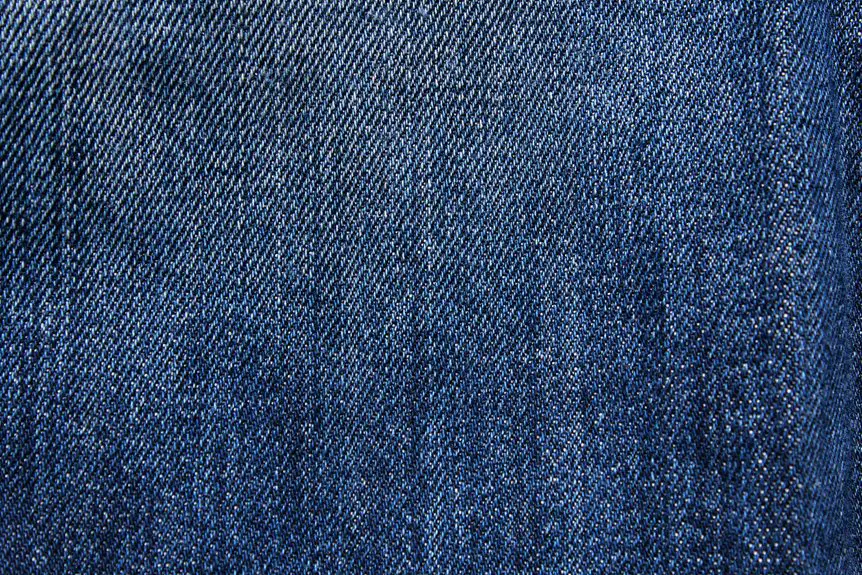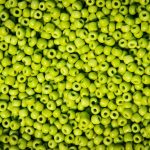When you see 100% polyamide, you’re looking at a strong, synthetic fabric made from repeating amide-linked units. It’s durable, elastic, moisture-wicking, and resistant to abrasion, making it perfect for activewear, swimwear, and outdoor gear. Polyamide also dries quickly and holds its shape well. Caring for it is easy with gentle washing and low heat drying. If you want to explore its uses, benefits, and environmental impact, there’s plenty more to discover.
Table of Contents
Key Takeaways
- 100% polyamide is a synthetic fabric made entirely from polymer fibers linked by amide bonds.
- It is known for durability, elasticity, and resistance to abrasion and chemicals.
- Commonly used in textiles like sportswear, swimwear, and hosiery due to moisture-wicking properties.
- Polyamide fabric is lightweight, quick-drying, and maintains shape well over time.
- Care involves gentle washing in cold water, air drying, and avoiding high heat ironing.
Definition and Composition of Polyamide
Polyamide, commonly known as nylon, is a synthetic polymer made from repeating units linked by amide bonds. When you see “100% polyamide” on a label, it means the fabric consists entirely of these polymer chains.
Polyamides form through a chemical reaction called polycondensation, where monomers containing amine and carboxyl groups bond together. This creates a strong, flexible material valued for its durability and resistance to abrasion and chemicals.
You’ll find polyamide used in textiles, engineering plastics, and even automotive parts. Its molecular structure gives it excellent heat resistance and elasticity, making it popular in everything from clothing to industrial applications.
Understanding this composition helps you appreciate why polyamide is both versatile and reliable in many products you use daily.
History and Development of Polyamide Fibers
You’ll find that polyamide fibers have a fascinating history, starting with early innovations in the 1930s.
Key inventors like Wallace Carothers played a huge role in shaping the development of these materials.
Over time, production techniques evolved, making polyamide fibers more versatile and widely used today.
Early Polyamide Innovations
The story of early polyamide innovations traces back to the 1930s when scientists sought to create synthetic fibers that could rival natural materials like silk.
You’d find that these breakthroughs didn’t happen overnight but involved rigorous experimentation and chemical mastery.
As you explore these developments, keep in mind:
- Researchers focused on creating strong, elastic fibers.
- They experimented with different polymerization techniques.
- Early fibers had to balance durability with comfort.
- Industrial synthesis methods were refined for mass production.
- Initial applications targeted textiles and military uses.
Key Inventors and Milestones
Although many contributed to its development, Wallace Carothers stands out as a key inventor who pioneered the creation of nylon, the first fully synthetic polyamide fiber.
In the 1930s, Carothers and his team at DuPont synthesized nylon, revolutionizing textiles by offering strong, elastic, and washable fibers. Nylon’s debut in stockings in 1939 marked a major milestone, quickly gaining popularity due to its durability.
Soon after, polyamide fibers found uses beyond apparel, in parachutes and industrial materials during World War II.
You’ll also find significant milestones in the 1940s and 1950s, when other types of polyamides like nylon 6 were developed, expanding the fiber’s versatility.
Understanding these inventors and milestones helps you appreciate how polyamide fibers became integral to modern textiles and industries.
Evolution of Production Techniques
Tracing the evolution of polyamide production techniques reveals how innovation transformed raw materials into versatile fibers we rely on today.
You’ll see that improvements focused on efficiency, quality, and environmental impact. Early methods involved batch polymerization, which was labor-intensive and inconsistent.
Then continuous polymerization streamlined production, boosting output and uniformity. Spinning techniques evolved too, from dry to wet and melt spinning, enhancing fiber strength and texture.
Today, you benefit from eco-friendly processes reducing waste and energy use. Key developments include:
- Introduction of continuous polymerization for steady production
- Advances in melt spinning for stronger fibers
- Development of copolyamides for specialized properties
- Implementation of closed-loop recycling systems
- Use of bio-based monomers for sustainability
Understanding these helps you appreciate the sophisticated science behind every polyamide garment you wear.
Physical Properties of 100% Polyamide Fabric
You’ll find that 100% polyamide fabric offers impressive strength and durability, making it a popular choice for many applications. It’s lightweight yet resilient, resists abrasion, and has excellent elasticity, which helps the fabric retain its shape. Additionally, polyamide is quick-drying and moisture-wicking, keeping you comfortable in various conditions. Its low absorbency means it handles moisture better than many natural fibers. Here’s a quick overview of key physical properties:
| Property | Description | Benefit |
|---|---|---|
| Tensile Strength | High resistance to breaking | Long-lasting wear |
| Elasticity | Good stretch and recovery | Maintains shape |
| Moisture Wicking | Low absorption, dries fast | Comfort during activity |
| Abrasion Resistance | Strong resistance to surface wear | Durable fabric surface |
Common Uses and Applications of Polyamide
You’ll find 100% polyamide widely used in the textile industry for making durable, lightweight fabrics.
It’s also popular in industrial and engineering fields due to its strength and resistance to wear.
Let’s explore how these qualities make polyamide a versatile material in various applications.
Textile Industry Applications
Polyamide fibers find their way into countless textile products you use every day, from athletic wear to lingerie. You’ll notice their durability, elasticity, and moisture-wicking properties make them a favorite in the textile industry.
When you choose garments made from polyamide, you benefit from:
- Sportswear that stays breathable and stretches with your movement
- Swimwear that resists chlorine and dries quickly
- Hosiery and lingerie offering a smooth, comfortable fit
- Outdoor gear that withstands harsh conditions
- Fashion apparel blending strength with a silky feel
These applications show how polyamide enhances comfort and performance.
Next time you pick polyamide clothing, you’ll know it’s designed for both function and style, perfectly suited for active, everyday wear.
Industrial and Engineering Uses
Although known for its role in textiles, polyamide excels in industrial and engineering applications thanks to its strength, chemical resistance, and thermal stability.
When you use polyamide, you benefit from a durable material ideal for gears, bearings, and automotive parts that endure mechanical stress and heat. Its low friction properties make it perfect for moving components, reducing wear and extending equipment life.
You’ll also find polyamide in electrical insulation, where its resistance to electricity and heat guarantees safety and performance.
In construction, it serves as reinforcement in composite materials and piping systems resistant to chemicals.
By choosing polyamide, you get a versatile polymer that adapts to demanding environments, offering reliability and efficiency across various industries.
Its combination of toughness and adaptability makes it a go-to material for engineers and manufacturers alike.
Benefits of Wearing or Using Polyamide Products
Since polyamide fibers are lightweight yet strong, you’ll find products made from them offer excellent durability without sacrificing comfort.
Polyamide fibers combine lightweight feel with strong durability, ensuring comfort without compromise.
When you wear or use polyamide items, you benefit from their resistance to wear and tear, making them last longer. They also dry quickly, which is perfect for active lifestyles or humid environments.
Polyamide’s elasticity means your clothing retains its shape, so you always look sharp. Plus, the fabric feels smooth against your skin, enhancing comfort.
Here are key benefits you’ll enjoy with polyamide products:
- High durability and strength
- Quick moisture-wicking and drying
- Excellent shape retention and flexibility
- Lightweight and breathable feel
- Resistance to stains and wrinkles
These advantages make polyamide a smart choice for everyday wear and gear.
Differences Between Polyamide and Other Synthetic Fibers
You’ve seen how polyamide stands out for its durability, comfort, and quick-drying properties.
Compared to other synthetic fibers like polyester and acrylic, polyamide offers superior elasticity and softness, making it feel more natural against your skin.
Unlike polyester, which tends to retain odors, polyamide resists smells better, keeping you fresher longer.
Acrylic, while warm, doesn’t wick moisture as effectively as polyamide, so you might feel less comfortable during intense activities.
Polyamide also boasts higher abrasion resistance, meaning your garments last longer without wearing out.
When you choose polyamide, you get a lightweight, breathable fabric ideal for activewear, unlike nylon’s sometimes stiff texture or polyester’s heavier feel.
These differences help you pick materials that suit your lifestyle and comfort needs precisely.
How to Care for and Maintain Polyamide Fabrics
Caring for polyamide fabrics is easier than you might think, and following a few simple steps will keep your garments looking great longer.
Proper care makes polyamide fabrics last longer and look better with minimal effort.
To maintain polyamide’s durability and color, treat it gently and avoid harsh conditions.
- Wash in cold or lukewarm water to prevent damage and shrinkage.
- Use mild detergent and avoid bleach, which can weaken fibers.
- Turn garments inside out before washing to protect the surface.
- Skip high heat when drying; air dry or use a low-heat setting.
- Avoid ironing, but if necessary, use a low temperature and a pressing cloth.
Environmental Impact and Sustainability Considerations
Although polyamide offers many benefits as a fabric, you should be aware of its environmental impact and sustainability challenges.
Polyamide, commonly known as nylon, is a synthetic material derived from petrochemicals, which means its production relies heavily on fossil fuels. This process releases greenhouse gases and consumes significant energy.
Additionally, polyamide isn’t biodegradable, so it can persist in landfills for many years if not recycled. When you wash polyamide garments, tiny microplastics may shed and enter waterways, posing risks to marine life.
However, some manufacturers are now producing recycled polyamide from fishing nets and industrial waste, reducing environmental harm.
Tips for Choosing Quality Polyamide Clothing and Accessories
When selecting polyamide clothing and accessories, focus on durability, comfort, and manufacturing quality to verify you get the best value.
Start by checking the fabric’s texture—high-quality polyamide feels smooth and resilient, not rough or flimsy.
Next, inspect stitching and seams; tight, even stitches signify better craftsmanship.
Consider the garment’s breathability and stretch to ascertain comfort during wear.
Also, look for reputable brands that disclose material sourcing and production methods, as this often reflects quality standards.
Finally, read customer reviews to gauge real-world performance and durability.
- Feel the fabric for smoothness and strength
- Examine seams for neat, secure stitching
- Ascertain good stretch and breathability
- Choose brands with transparent sourcing
- Check customer feedback for durability insights
These tips help you pick polyamide items that last and feel great.
Frequently Asked Questions
Can 100% Polyamide Fabric Be Dyed at Home?
Dyeing delicate fabrics like 100% polyamide at home demands dedication and detail. You’ll need special synthetic dyes and steady steps to succeed. Don’t doubt; with care, you can creatively customize your clothes confidently.
Is 100% Polyamide Fabric Hypoallergenic?
You’ll find 100% polyamide fabric generally hypoallergenic since it resists bacteria and moisture well. However, if you have sensitive skin, you might still experience irritation, so test a small patch before full use.
How Does Polyamide React to High Heat Exposure?
When polyamide meets high heat, it’s like a snowman in the sun—it melts or deforms quickly. You shouldn’t expose it to temperatures above 150°C, or it’ll lose strength and shape, ruining your fabric.
Are There Any Health Risks Associated With Polyamide?
You shouldn’t worry much about polyamide’s health risks during normal use. However, avoid inhaling fumes if it’s overheated, as burning polyamide can release toxic gases harmful to your respiratory system. Stay cautious!
Can 100% Polyamide Fabric Be Recycled?
You can recycle 100% polyamide fabric, but it requires specialized facilities since it’s a synthetic fiber. Check local recycling programs or textile recyclers that accept nylon-based materials to guarantee your fabric is properly processed and reused.
- Does Chiffon Fabric Stink - July 15, 2025
- Does Chiffon Fabric Affect the Economy - July 15, 2025
- Does Cotton Fabric Have a Nap - July 15, 2025







